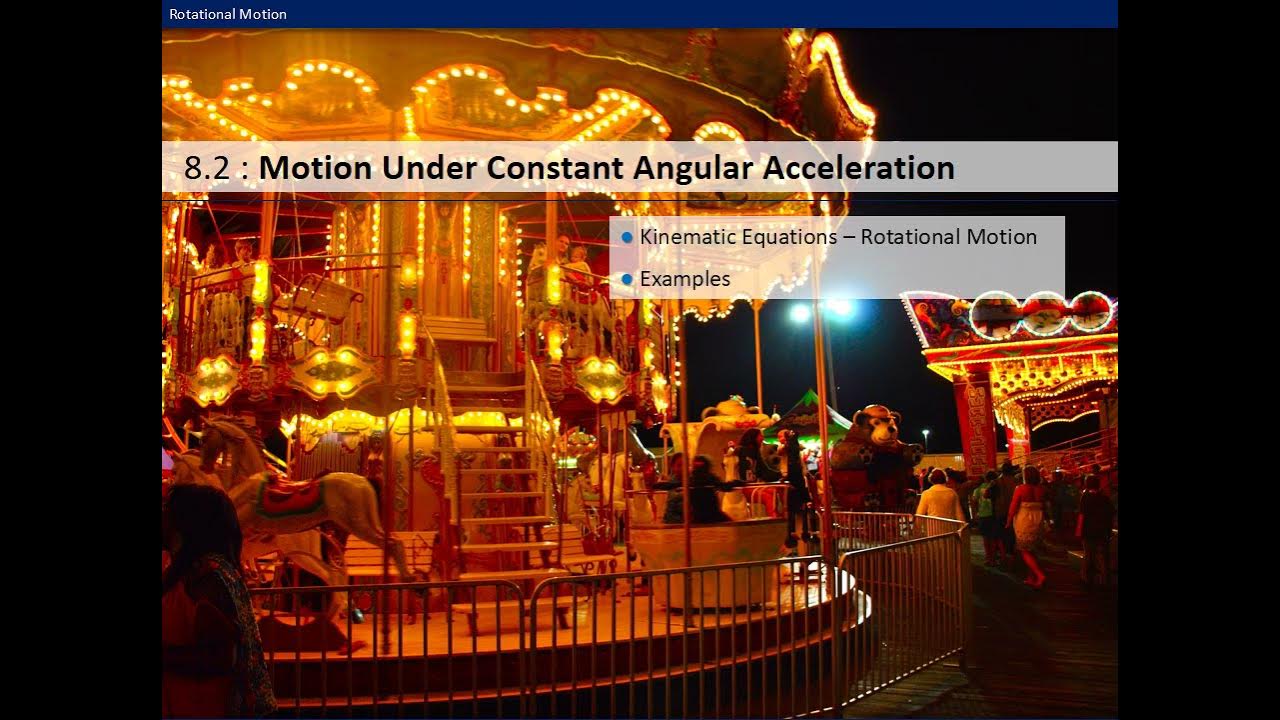Rolling Without Slipping Introduction and Demonstrations
Summary
TLDRThis video explains the concept of rolling without slipping, where an object combines both translational and rotational motion. The key takeaway is that the velocity of the center of mass is directly related to the angular velocity of the object. The bottom of the object has zero velocity relative to the surface due to static friction, while the top has double the velocity of the center of mass. The video also covers concepts like kinetic energy, acceleration, and distance traveled, offering a clear understanding of rolling motion and its associated equations.
Takeaways
- 😀 Rolling without slipping means there is no slipping at the contact point between the rolling object and the surface.
- 😀 The center of mass of an object rolling without slipping moves with a constant velocity.
- 😀 The point on the edge of the rolling object traces a cycloid curve, a curve made by a point on a circle rolling along a straight line.
- 😀 Rolling without slipping combines two types of motion: pure translational motion and pure rotational motion.
- 😀 In pure translational motion, all parts of the object move with the same velocity as the center of mass.
- 😀 In pure rotational motion, the center of mass does not move, but the edge has a tangential velocity equal to the radius times the angular velocity.
- 😀 The velocity of the center of mass in rolling without slipping is equal to the radius times the angular velocity.
- 😀 The velocity of the top of the object rolling without slipping is twice the velocity of the center of mass.
- 😀 The bottom of the object has a velocity of zero at the point of contact with the surface due to static friction.
- 😀 The total kinetic energy of an object rolling without slipping is the sum of its translational and rotational kinetic energy, and the acceleration of the center of mass is proportional to the radius times angular acceleration.
Q & A
What does it mean for an object to be rolling without slipping?
-Rolling without slipping means that at the point of contact between the object and the surface, there is no relative motion. The velocity of the contact point is zero, ensuring there is no sliding or slipping.
What is the path traced by the blue dot on the edge of a rolling object?
-The blue dot traces a cycloid, which is a curve generated by a point on a circle as it rolls along a straight line without slipping.
How is rolling without slipping a combination of two types of motion?
-Rolling without slipping combines pure translational motion, where all parts of the object move with the same velocity, and pure rotational motion, where the center of mass remains stationary but the object's edge has a tangential velocity.
What happens to the velocity of the center of mass in a purely translational motion?
-In pure translational motion, the velocity of the center of mass is constant, and every part of the object moves with the same velocity.
What is the velocity of the edge of a purely rotational object?
-In pure rotational motion, the velocity of the edge of the object is equal to the radius times the angular velocity, and the center of mass has zero velocity.
How does the velocity of the top of the rolling object compare to its center of mass?
-The velocity of the top of the object is equal to the velocity of the center of mass plus the tangential velocity of the edge of the object, which results in a velocity that is twice the velocity of the center of mass.
What is the velocity of the bottom of an object rolling without slipping at the moment of contact with the surface?
-At the moment of contact, the velocity of the bottom of the object is zero relative to the surface, as there is no slipping, and it is stationary with respect to the surface.
What is the equation for the velocity of the center of mass of an object rolling without slipping?
-The velocity of the center of mass of an object rolling without slipping equals the radius of the object times its angular velocity (v_cm = R * ω).
How does the velocity of a rolling object relate to its top and bottom?
-The velocity of the top of the object is twice the velocity of the center of mass, while the velocity of the bottom is zero relative to the surface. This difference arises due to the combination of rotational and translational motions.
What is the total kinetic energy of an object rolling without slipping?
-The total kinetic energy is the sum of translational and rotational kinetic energy, given by the equation: 1/2 * m * v^2 (translational) + 1/2 * I * ω^2 (rotational), where m is mass, v is velocity, I is rotational inertia, and ω is angular velocity.
Outlines

Этот раздел доступен только подписчикам платных тарифов. Пожалуйста, перейдите на платный тариф для доступа.
Перейти на платный тарифMindmap

Этот раздел доступен только подписчикам платных тарифов. Пожалуйста, перейдите на платный тариф для доступа.
Перейти на платный тарифKeywords

Этот раздел доступен только подписчикам платных тарифов. Пожалуйста, перейдите на платный тариф для доступа.
Перейти на платный тарифHighlights

Этот раздел доступен только подписчикам платных тарифов. Пожалуйста, перейдите на платный тариф для доступа.
Перейти на платный тарифTranscripts

Этот раздел доступен только подписчикам платных тарифов. Пожалуйста, перейдите на платный тариф для доступа.
Перейти на платный тарифПосмотреть больше похожих видео
5.0 / 5 (0 votes)






